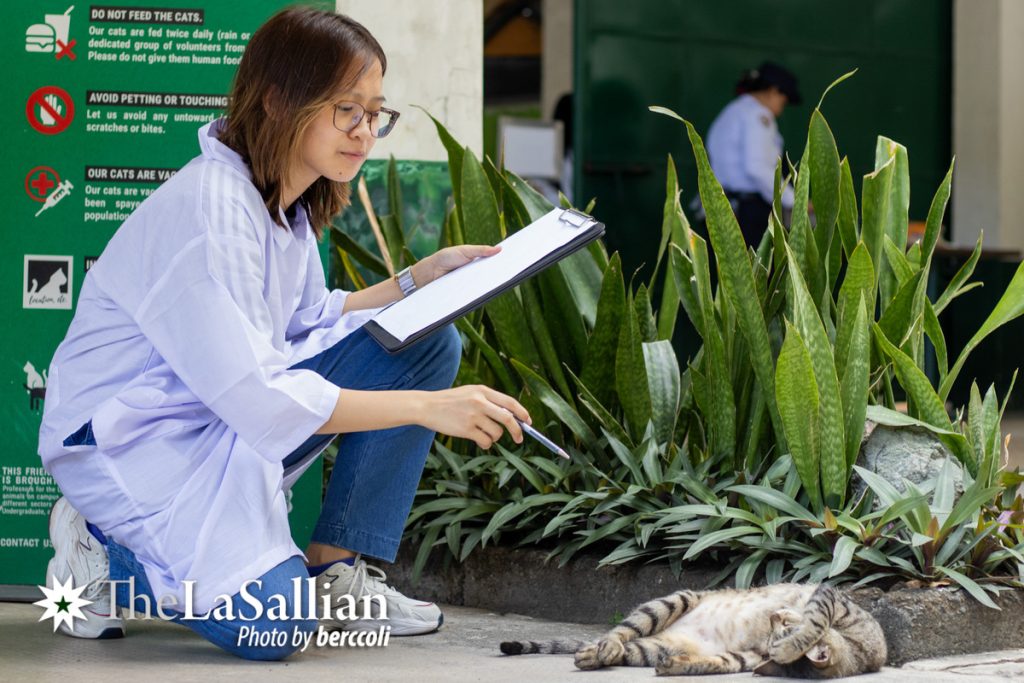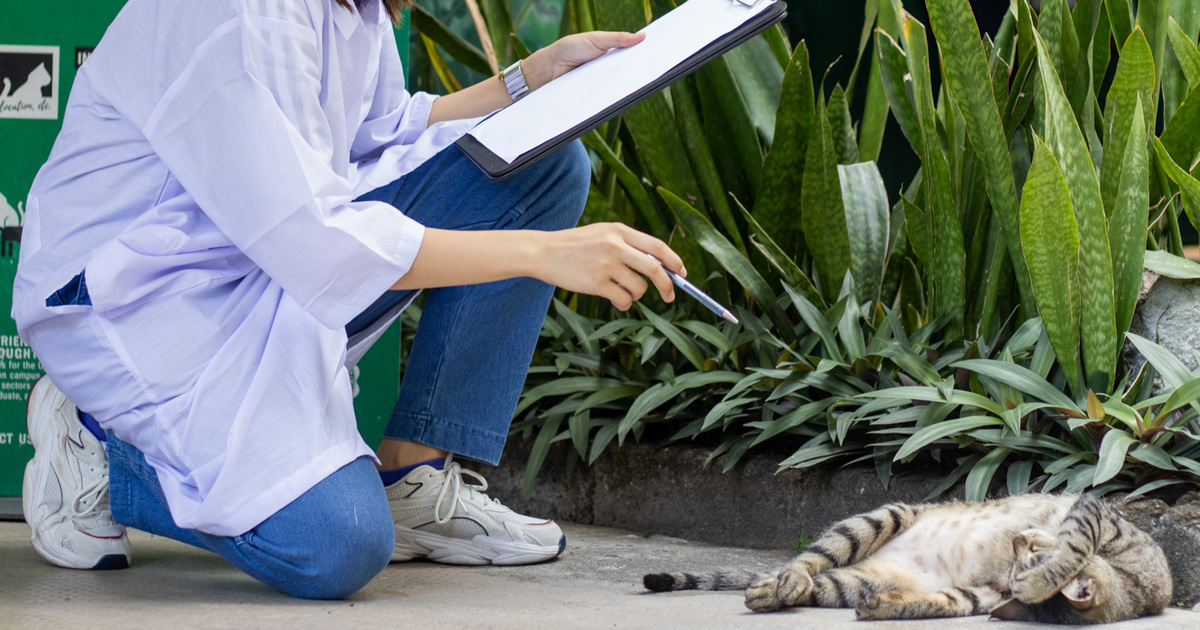Ever since cats first got their claws on humans, we have had a love affair with the animal. The University alone has become home to more than a hundred feline friends who are just waiting to be adopted. While these cats continue to delight us with their play, they also puzzle us whenever they jump on the tables, paw at our bags, and interrupt our work with their yowling.

To address this gap in knowledge, the Department of Biology and the DLSU Professors for the Upliftment of Society’s Animals (PUSA) have formed a new elective for all undergraduate students: Feline Science or FELISCI. The three-unit hybrid course aims to contextualize recent findings in cat behavior science through both standard lectures and laboratory work. The course will be open to students during Academic Year 2024-2025.
Purr-fect for the job
Garfield de Leon, a member of DLSU PUSA, recommends the course for all cat lovers and owners. He reveals that the professors of the course will be the campus cats themselves, such as Casper and Chocnut. “They have no prior teaching experience, but why should that matter? Everyone has to start somewhere,” he writes.

In regard to her new position, Casper shares that she feels “grateful for the opportunity.” As one of the most photogenic cats in DLSU, she often models for students. “Although I had fun [modeling], it became boring after a while. May iba naman akong talents I’d like to hone.”
(I have other talents I’d like to hone.)
Meanwhile, Chocnut is looking forward to the salary and increased attention she will receive from the job. “For every face-to-face session, dapat palaging may dalang cat food ang students ko. I’m also willing to free up my schedule for consultations as long as they repay me with belly scratches,” she adds.
(For every face-to-face session, my students should always have cat food in hand.)
The nitty-gritty
According to the FELISCI syllabus, the students will spend the first four weeks of the course analyzing variations in purring, meowing, hissing, and other modes of cat–human communication. By the end of the term, they are expected to produce a phonetic study about the feline language. “This topic came up after several students tried to pet my friends without their consent,” Casper explains. “Through FELISCI, we hope the students will learn to take a hint and understand when we want to be left alone.”
For Chocnut, her favorite part of the course is the chapter on diet and gut health. She believes that it will be a hit among Food Science majors because it will give them an opportunity to develop their culinary skills and elevate a cat’s meal. “I’ll give my students a 4.0 if they offer me a bowl of tuna and mice tartar,” she teases.
Other topics that will be covered in FELISCI include the unique rheology of household cats, the propaganda behind man’s best friend, the psychology behind the crazy cat lady, and the complexity of litter box etiquette.
Paw-gressive changes
De Leon shares that the idea for FELISCI was suggested by student volunteers of DLSU PUSA, who wanted to improve the quality of life of their feline companions. Julia Muning, an animal activist and the president of the organization, has been leading the calls for more cat-centric policies and programs in DLSU. While the University prides itself on embracing its diverse student body, she notes that there is a lack of inclusivity when it comes to the cats.
“To many, they are seen more as eye candy on campus rather than valuable members of the Lasallian community,” Muning once asserted in a focus group discussion about the issue. The event was part of her campaign The Time is Meow, which strives to raise the voices of campus cats. In response to this growing movement, the University established the course of FELISCI under the College of Science.
While the majority of the Lasallian community is thrilled about this newfound opportunity for the cats, some have spoken out about their worries regarding its implementation. Department of Biology professor Dr. Miyaw Rodriguez is concerned that having feline professors may be distracting for students, especially avid cat lovers. “Having a teacher that is too adorable might make the student pet them instead of listening to their lectures,” he claims.
Moreover, campus cat and future instructor Peekaboo fears that his new schedule may be a challenge for him, “I’ve never had a job before, so I’m currently planning how I’ll balance my teaching hours with my sunbathing time in front of Henry.”
Nonetheless, the establishment of FELISCI in DLSU marks a significant step toward inclusivity in the Lasallian community. The University hopes to set an example for other schools with campus cats, such as the University of Santo Tomas and Ateneo de Manila University. Although there are still concerns that must be addressed before its full implementation, the overwhelming enthusiasm among students and faculty makes this new course one of the most anticipated parts of the next academic year.
This article was published in The LaSallian‘s Spoof 2024 issue. To read more, visit bit.ly/TLSSpoof2024.



